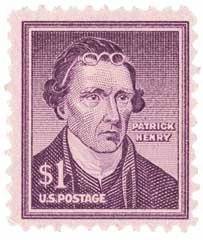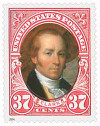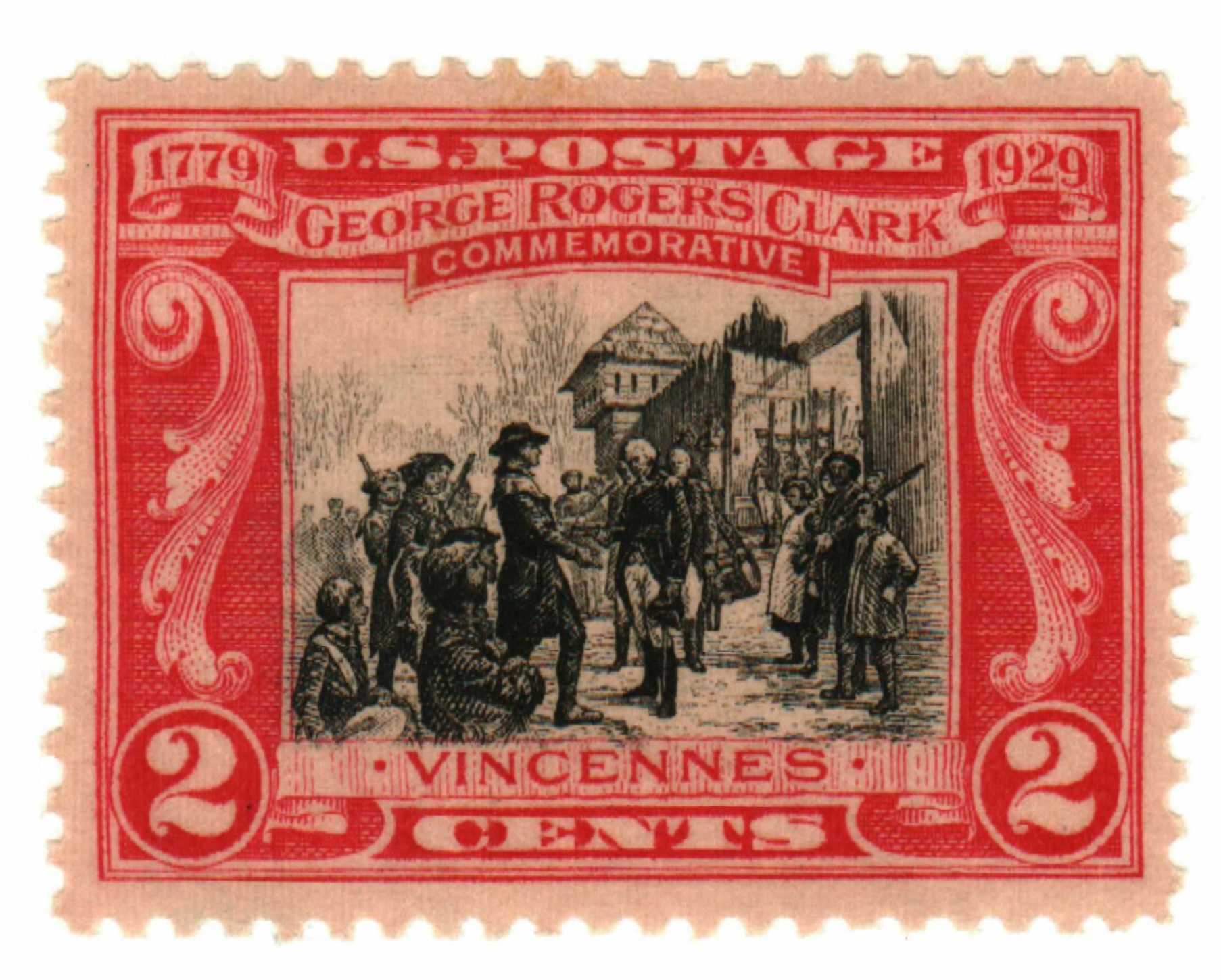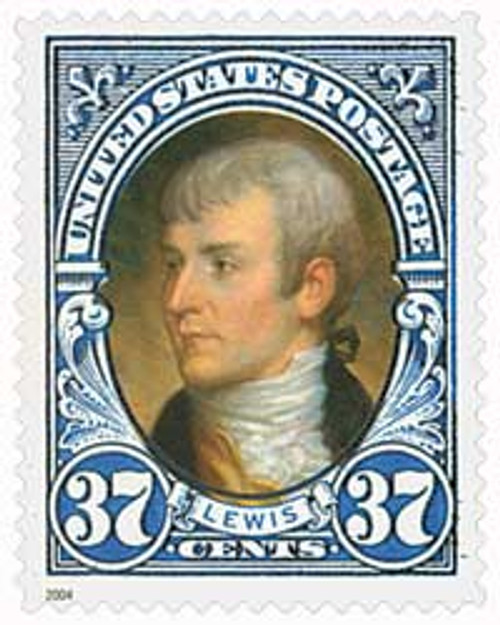
# 3856 - 2004 37c Clark, booklet single
2004 37¢ William Clark
City: Astoria, OR and various cities
Quantity: 20,000,000
Happy Birthday George Rogers Clark
Rogers was the second of ten children, five of whom would go on to become officers during the Revolutionary War. His youngest brother William was too young to fight in the war, but would go on to gain fame as a leader of the Lewis and Clark Expedition.
When Clark was young, he lived with his grandfather in King and Queen County, Virginia. There, he went to Donald Robertson’s school and met James Madison and John Taylor. Robertson taught them geography, mathematics, and several languages, including Latin. Clark left home when he was 19 to go on his first surveying trip to western Virginia. He spent two years surveying the Kanawha River and became acquainted with the Native Americans there.
After the French and Indian War, the British occupied the majority of the trans-Appalachian frontier. They soon passed the Proclamation of 1763, making the settlement of land west of the Appalachian Mountains illegal for colonists. The British responded harshly to settlers who ignored this decree, sending Native American war parties after trespassers.

In Kentucky, George Rogers Clark led a militia to defend the people against these attacks. However, Clark soon decided he would rather cut the attacks off at their British source. Clark developed a plan of action and brought it to the governor of Virginia, Patrick Henry, who quickly approved it. By the summer of 1778, Clark and his army of militiamen were on their way down the Ohio River.
The men traveled over 120 miles before they reached and captured the British outposts at Kaskaskia and Cahokia. During this time, the population of these settlements was primarily French, and they were not very fond of the British after the French and Indian War. Most were happy to join forces with Clark to take on their common enemy. With the help of Father Pierre Gibault and Dr. Jean Baptiste Laffont, Clark soon gained support from the outpost at Vincennes as well. The only French settlements Clark could not sway were Detroit and a few other northern posts.
2004 37¢ William Clark
City: Astoria, OR and various cities
Quantity: 20,000,000
Happy Birthday George Rogers Clark
Rogers was the second of ten children, five of whom would go on to become officers during the Revolutionary War. His youngest brother William was too young to fight in the war, but would go on to gain fame as a leader of the Lewis and Clark Expedition.
When Clark was young, he lived with his grandfather in King and Queen County, Virginia. There, he went to Donald Robertson’s school and met James Madison and John Taylor. Robertson taught them geography, mathematics, and several languages, including Latin. Clark left home when he was 19 to go on his first surveying trip to western Virginia. He spent two years surveying the Kanawha River and became acquainted with the Native Americans there.
After the French and Indian War, the British occupied the majority of the trans-Appalachian frontier. They soon passed the Proclamation of 1763, making the settlement of land west of the Appalachian Mountains illegal for colonists. The British responded harshly to settlers who ignored this decree, sending Native American war parties after trespassers.

In Kentucky, George Rogers Clark led a militia to defend the people against these attacks. However, Clark soon decided he would rather cut the attacks off at their British source. Clark developed a plan of action and brought it to the governor of Virginia, Patrick Henry, who quickly approved it. By the summer of 1778, Clark and his army of militiamen were on their way down the Ohio River.
The men traveled over 120 miles before they reached and captured the British outposts at Kaskaskia and Cahokia. During this time, the population of these settlements was primarily French, and they were not very fond of the British after the French and Indian War. Most were happy to join forces with Clark to take on their common enemy. With the help of Father Pierre Gibault and Dr. Jean Baptiste Laffont, Clark soon gained support from the outpost at Vincennes as well. The only French settlements Clark could not sway were Detroit and a few other northern posts.










